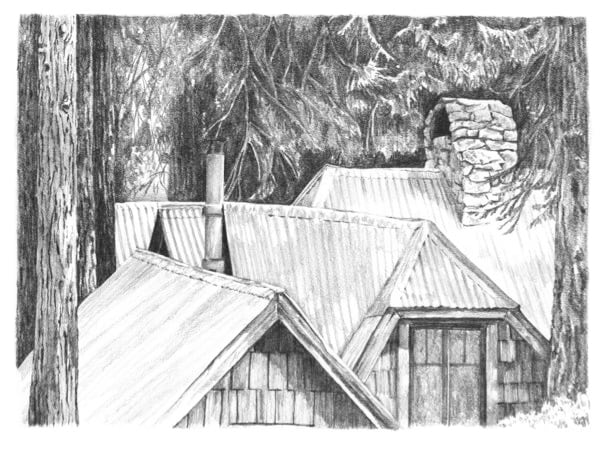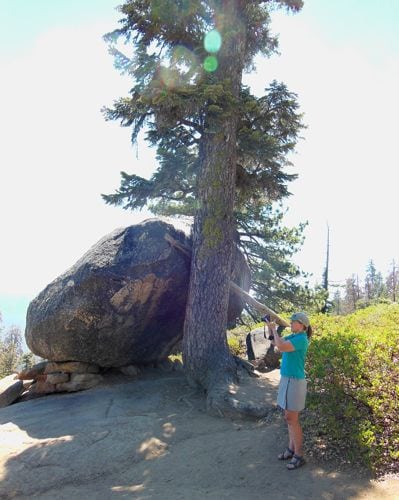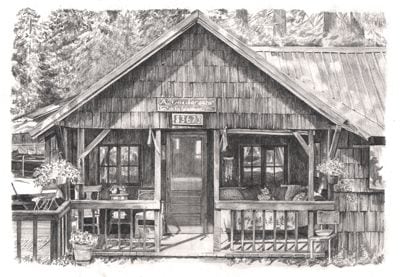Cabin Life: Final Thoughts
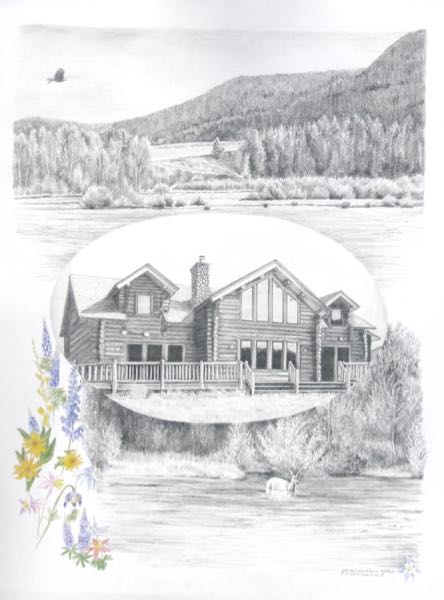
Someone’s Colorado cabin –definitely not small, rustic or rude
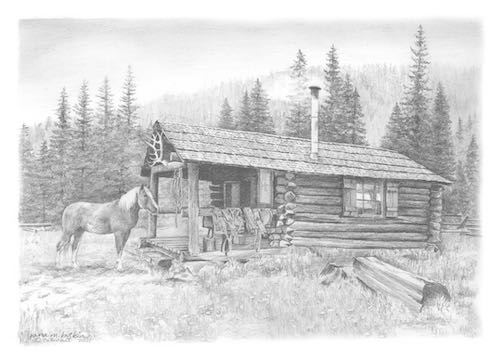
This is a backcountry cabin somewhere in Montana.
This rest of this post features drawings of Wilsonia cabins, where I spent 4 summers learning about that cabin community and discovering many common themes to the Mineral King community.
There are three distinct parts to cabin-ness:
- The building itself – small, rustic, basic, simple, often without electronic amenities. (But wait! What about the cabin pictured above?)
- The setting – rural, semi-secluded, in the mountains, taking an effort to get to (But wait! Have you ever been up Highway 180 to Wilsonia? And do these cabins look semi-secluded to you?)
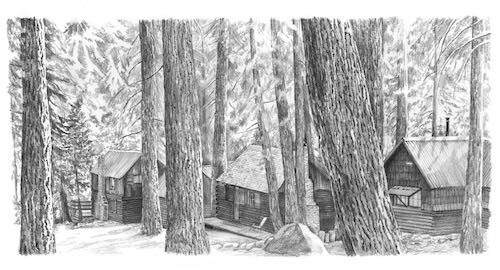 A Wilsonia road
A Wilsonia road
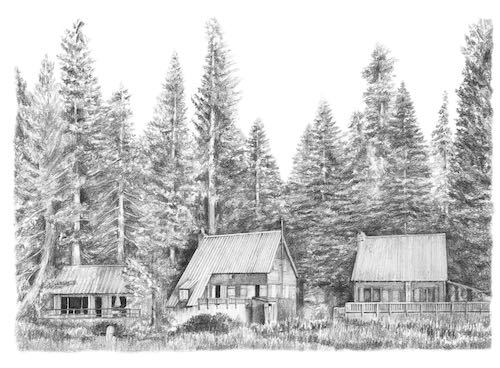 A Wilsonia neighborhood
A Wilsonia neighborhood
The culture—slower, focused on people instead of technology; a place to play, recreate and relax, mostly outside; a place where meals and fireplaces become events in and of themselves; returning to nostalgic pastimes either of our youth or of some idealized youth of our parents and grandparents.
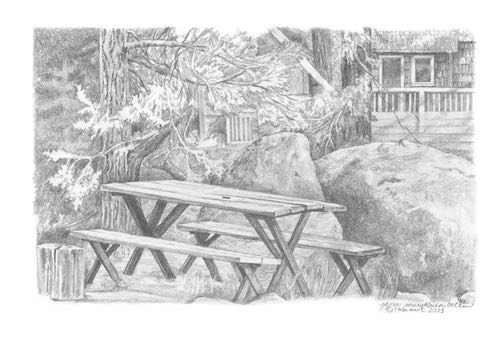 Outdoor dining is a big part of cabin life.
Outdoor dining is a big part of cabin life.
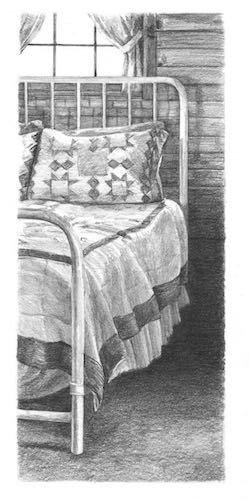 Napping is a regular method of relaxing at a cabin.
Napping is a regular method of relaxing at a cabin.
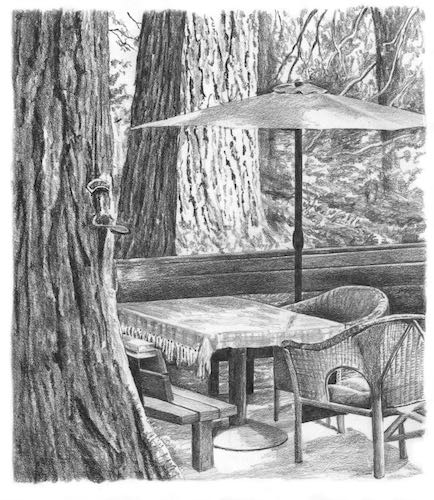 See? Outdoor dining area
See? Outdoor dining area
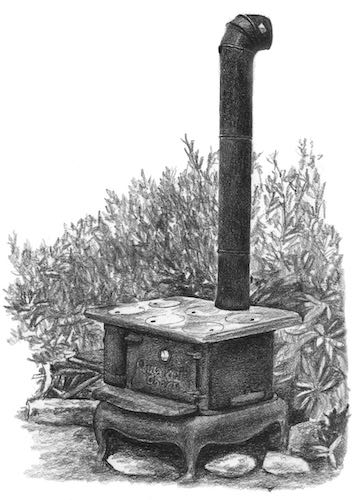 Even outdoor cooking!
Even outdoor cooking!
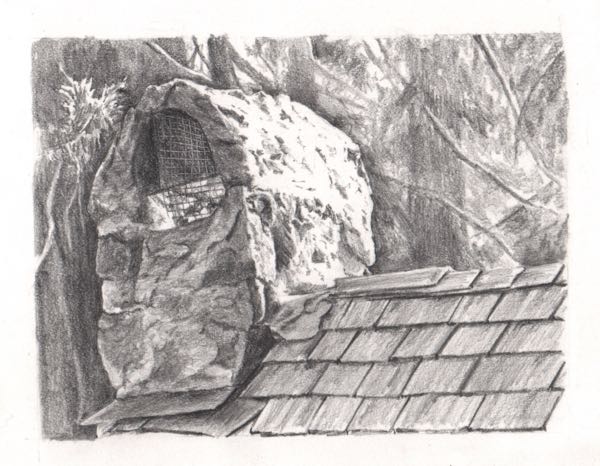
Fireplaces are a huge part of cabin culture.
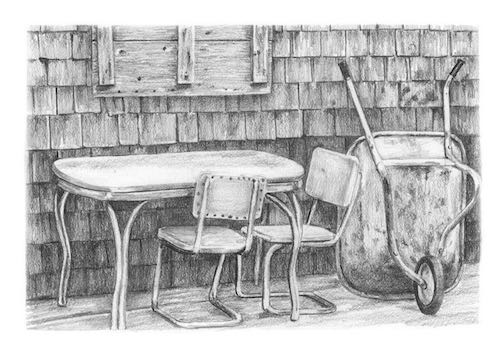 Eat and run??
Eat and run??
It seems that the culture part is the strongest determining factor of cabin life. Some of our cabin neighbors gathered in another location for several summers, due to illness of one of their group. One of them told me, “We do Mineral King things in Seattle, and Mineral King is present with us there.” (I probably paraphrased it beyond all recognition – Forgive me, Sawtooth Six!)
Thus, we conclude our 2023 series on Cabin Life. (unless I think of something else)
P.S. Most of the drawings in this post are part of the book The Cabins of Wilsonia, available here.
P.P.S. I can draw your cabin because. . .
. . . using pencils, oil paints, and murals, I make art you can understand, of places and things you love, for prices that won’t scare you.
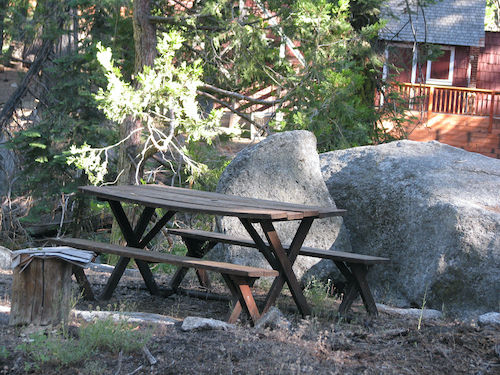
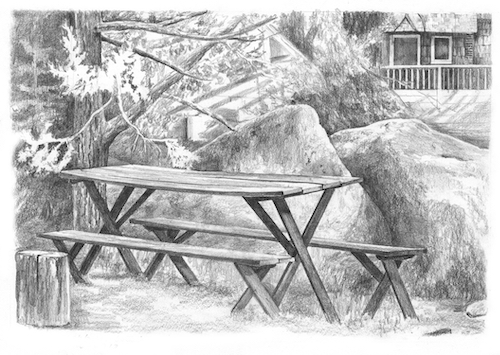
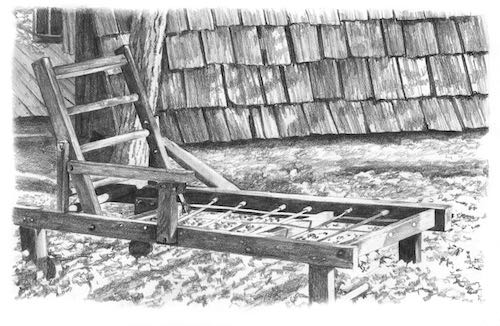
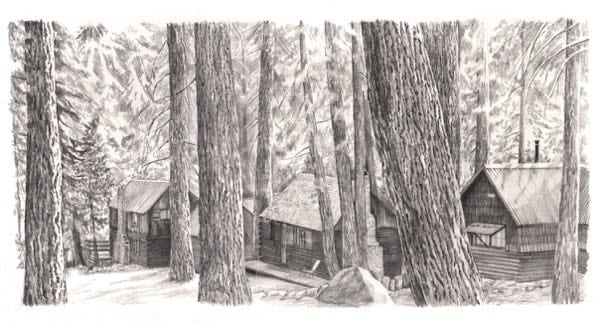

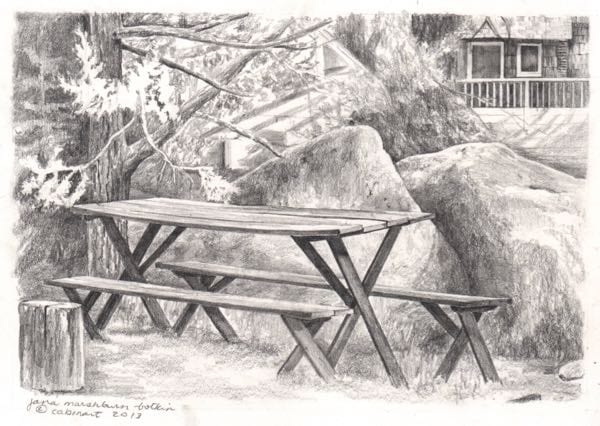
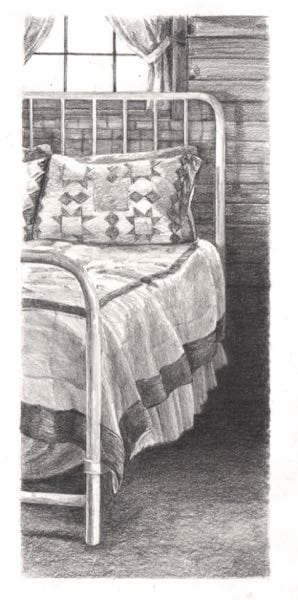
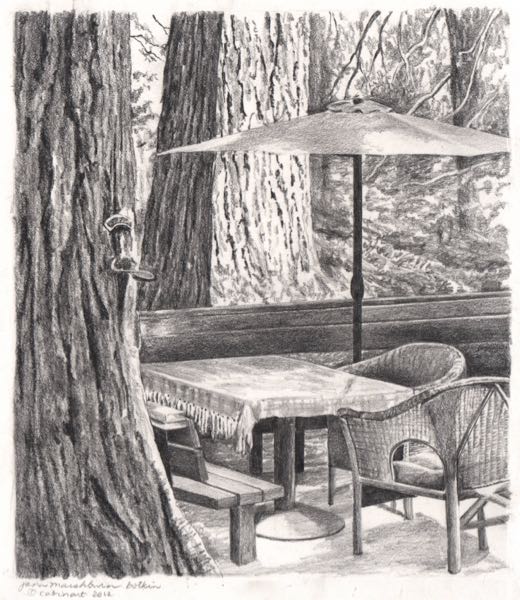
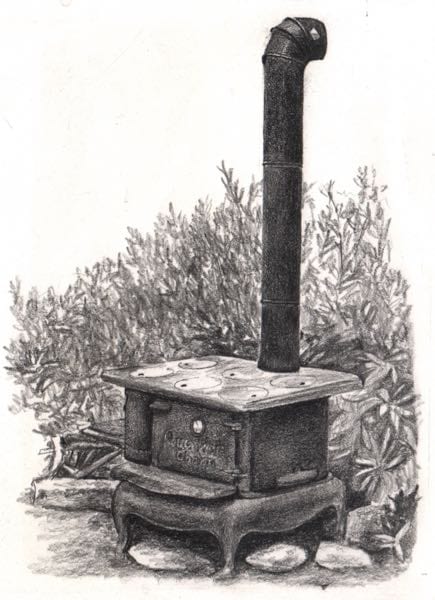
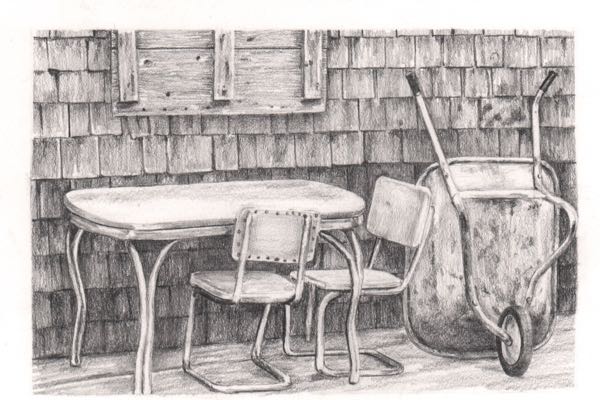
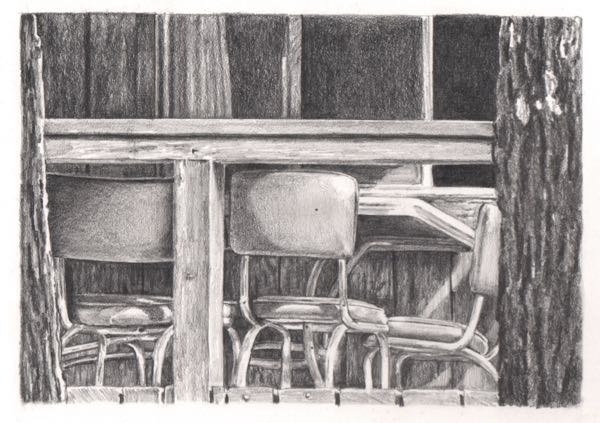
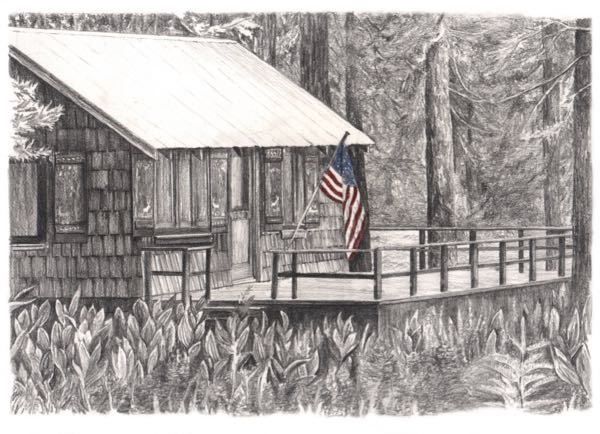
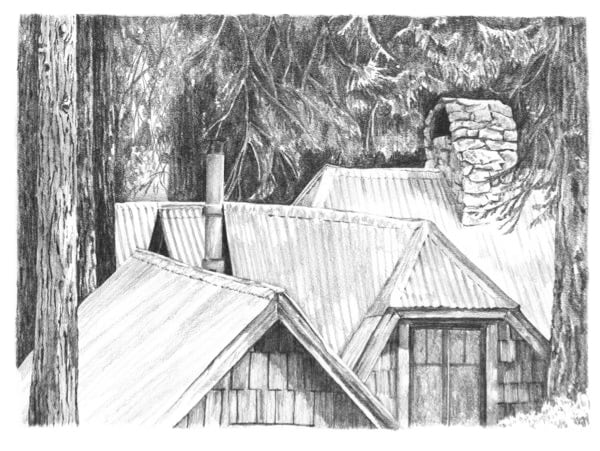
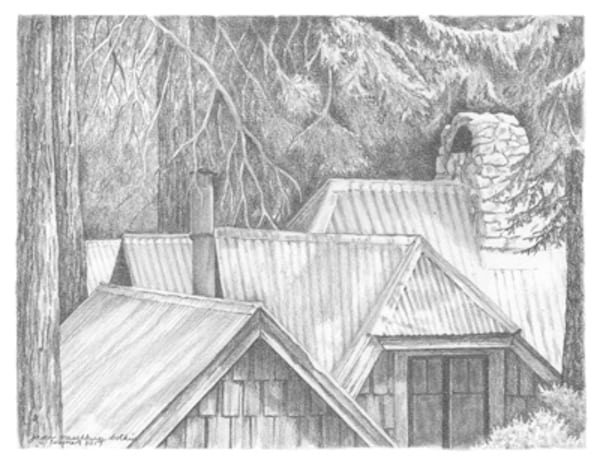 I am more confident that the roof angles are closer to reality this time, and I think it has tighter detail. I’m guessing that the shocking difference in darkness is due to the computer preparations required for printing in the book. It wasn’t that dark in person because my pencils aren’t that dark. It almost looks like ink to me! (Nope, not participating in Inktober.)
I am more confident that the roof angles are closer to reality this time, and I think it has tighter detail. I’m guessing that the shocking difference in darkness is due to the computer preparations required for printing in the book. It wasn’t that dark in person because my pencils aren’t that dark. It almost looks like ink to me! (Nope, not participating in Inktober.)